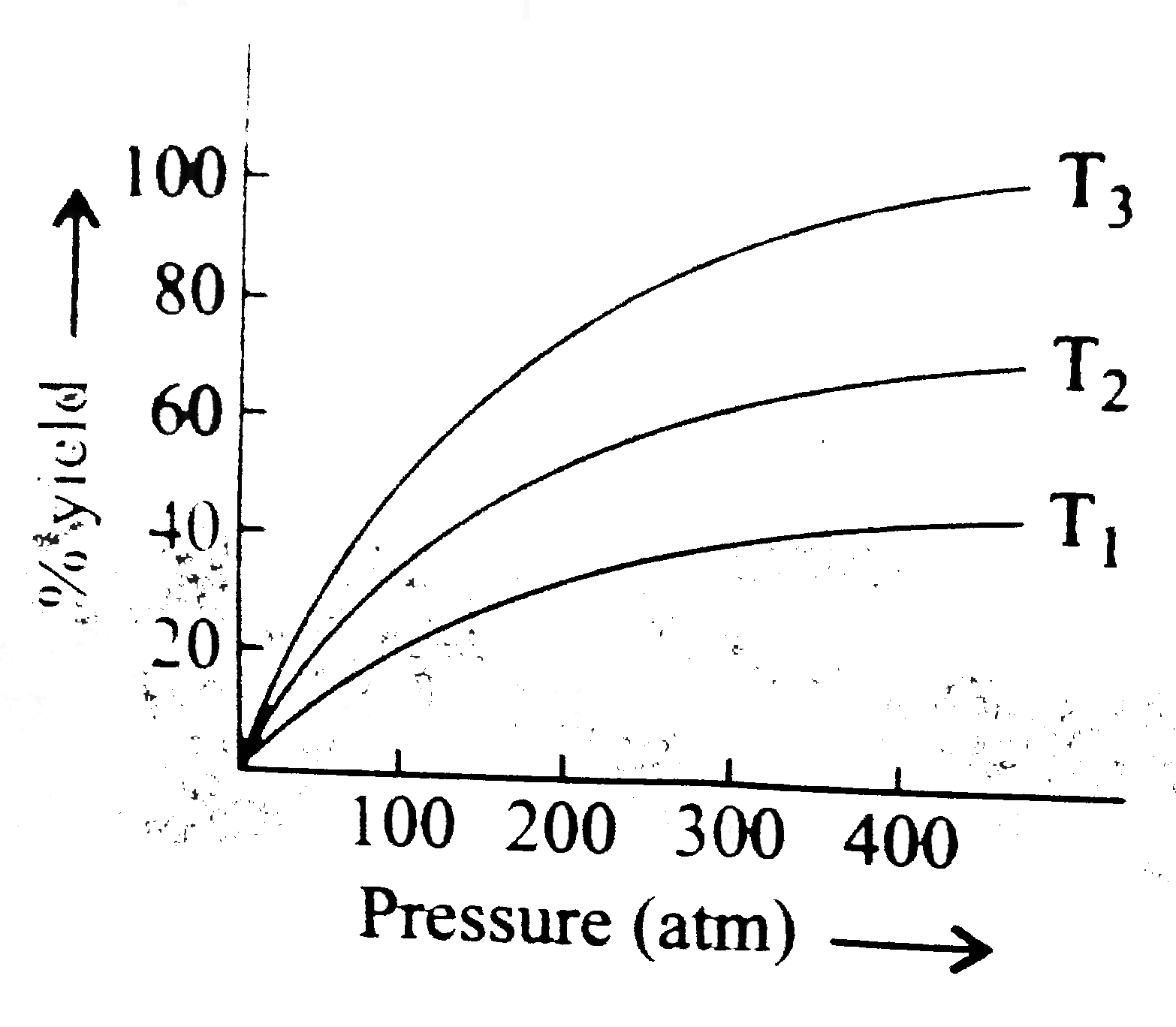N2(g)+3H2(g)⇔2NH3(g),ΔHɵ=−22.4kJ
The pressure inside the chamber is 100 atm and temperature at 300K
If Kp for the reaction is 1.44×10−5, then the value of Kp for the decomposition of NH3
2NH3(g)⇔N2(g)+3H2(g)
will be:
(a) √1.44×10−5
(b) (1.44×10−5)4
(c) 11.44×10−5
(d) 1.00×10−3
The correct Answer is:C
To find the value of Kp for the decomposition of NH3 given the reaction:
2NH3(g)⇌N2(g)+3H2(g)
we can follow these steps:
Step 1: Identify the Given Information
We know the following:
- The forward reaction is:
N2(g)+3H2(g)⇌2NH3(g)
- The equilibrium constant Kp1 for this reaction is given as:
Kp1=1.44×10−5
- We need to find Kp2 for the reverse reaction:
2NH3(g)⇌N2(g)+3H2(g)
Step 2: Understand the Relationship Between Kp1 and Kp2
When a reaction is reversed, the equilibrium constant for the reverse reaction is the reciprocal of the equilibrium constant for the forward reaction. Therefore, we can express this relationship as:
Kp2=1Kp1
Step 3: Calculate Kp2
Using the value of Kp1:
Kp2=11.44×10−5
Calculating this gives:
Kp2=11.44×105=0.6944×105=6.944×104
Step 4: Final Answer
Thus, the value of Kp2 for the decomposition of NH3 is:
Kp2≈6.94×104
We know the following:
- The forward reaction is:
N2(g)+3H2(g)⇌2NH3(g)
- The equilibrium constant Kp1 for this reaction is given as:
Kp1=1.44×10−5
- We need to find Kp2 for the reverse reaction:
2NH3(g)⇌N2(g)+3H2(g)
When a reaction is reversed, the equilibrium constant for the reverse reaction is the reciprocal of the equilibrium constant for the forward reaction. Therefore, we can express this relationship as:
Using the value of Kp1:
Thus, the value of Kp2 for the decomposition of NH3 is:
Topper's Solved these Questions
- CHEMICAL EQUILIBRIUMBOOK - CENGAGE CHEMISTRY ENGLISHCHAPTER - CHEMICAL EQUILIBRIUMEXERCISE - Exercises (Multiple Correct)
26 Videos
- CHEMICAL EQUILIBRIUMBOOK - CENGAGE CHEMISTRY ENGLISHCHAPTER - CHEMICAL EQUILIBRIUMEXERCISE - Exercises (Single Correct)
58 Videos
- CHEMICAL EQUILIBRIUMBOOK - CENGAGE CHEMISTRY ENGLISHCHAPTER - CHEMICAL EQUILIBRIUMEXERCISE - Exercises (Subjective)
46 Videos
- CHEMICAL BONDING AND MOLECULAR STRUCTUREBOOK - CENGAGE CHEMISTRY ENGLISHCHAPTER - CHEMICAL BONDING AND MOLECULAR STRUCTUREEXERCISE - Archives Subjective
15 Videos
- CLASSIFICATION AND NOMENCLATURE OF ORGANIC COMPOUNDSBOOK - CENGAGE CHEMISTRY ENGLISHCHAPTER - CLASSIFICATION AND NOMENCLATURE OF ORGANIC COMPOUNDSEXERCISE - Analytical and Descriptive Type
3 Videos
Similar Questions
N2(g)+3H2(g)⇔2NH3(g),ΔHɵ=−22.4kJ
The pressure inside the chamber is 100 atm and temperature at 300K
If Kp for the given reaction is 1.44×10−5, then the value of Kc will be:
View SolutionN2(g)+3H2(g)⇔2NH3(g),ΔHɵ=−22.4kJ
The pressure inside the chamber is 100 atm and temperature at 300K
On adding catalyst the equilibrium of reaction:
View SolutionFor the reaction
N2(g)+3H2(g)⇔2NH3(g),ΔH=?
View SolutionFor the reaction 2NH3(g)⇔N2(g)+3H2(g)−xkcal, which is correct?
View SolutionN2(g)+3H2(g)⇔2NH3(g),ΔHɵ=−22.4kJ
The pressure inside the chamber is 100 atm and temperature at 300K
The preparation of ammonia by Haber's process is an exothermic reaction. If the preparation follows the following temperature-pressure relationship for its % yield. Then for temperature T1,T2 and T3 the correct option is:

View SolutionFor the reaction : N2(g)+3H2(g)⇔2NH3(g), ΔH=−ve, the correct statement is :
View SolutionFor the reactions,
N2(g)+3H2(g)⇔2NH3(g),
Kp=Kc(RT)…..
View SolutionKp is how many times equal to Kc for the given reaction ?
N2(g)+3H2(g)⇔2NH3(g)
View SolutionIn reaction N2(g)+3H2(g)⇔2NH3(g),ΔH=−93.6kJ/mole, the yield of ammonia does not increase when
View SolutionWrite the relation between Kp and Kc for the reaction:
N2(g)+3H2(g)⇔2NH3(g)
View Solution
